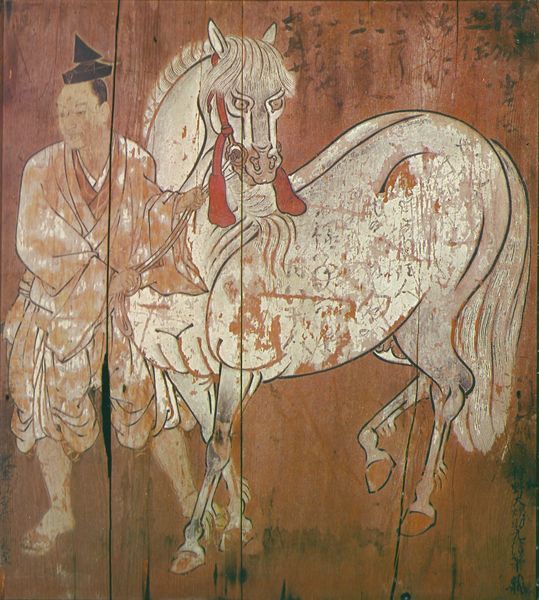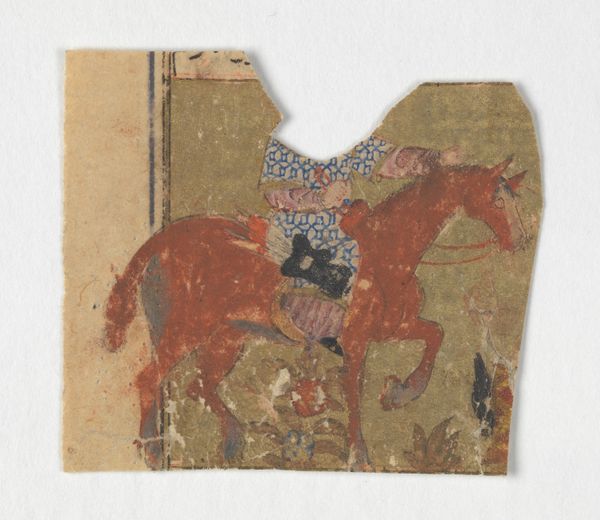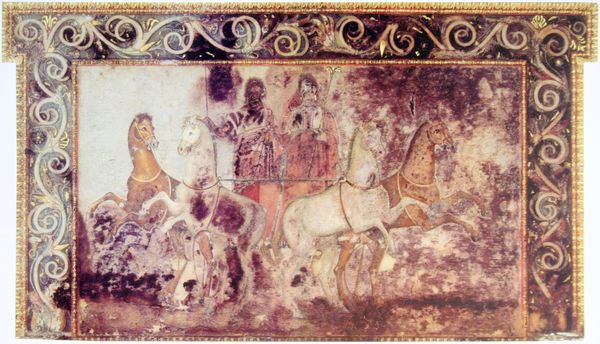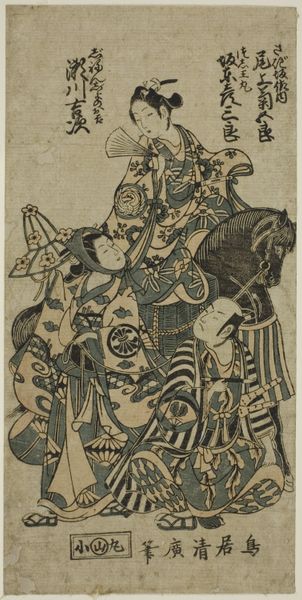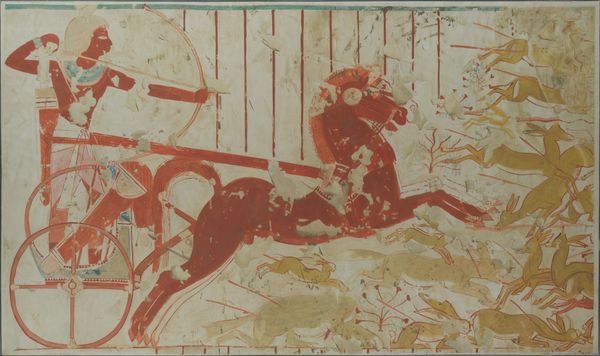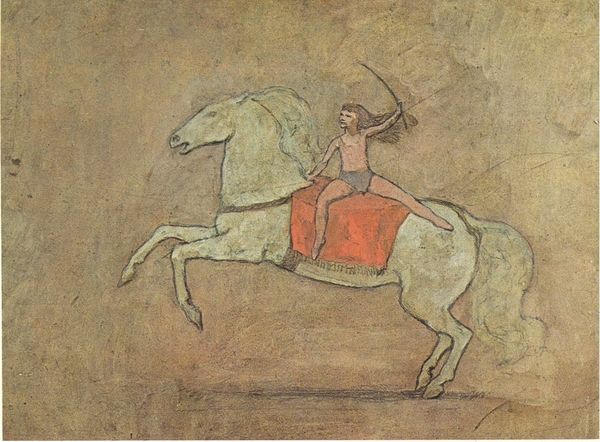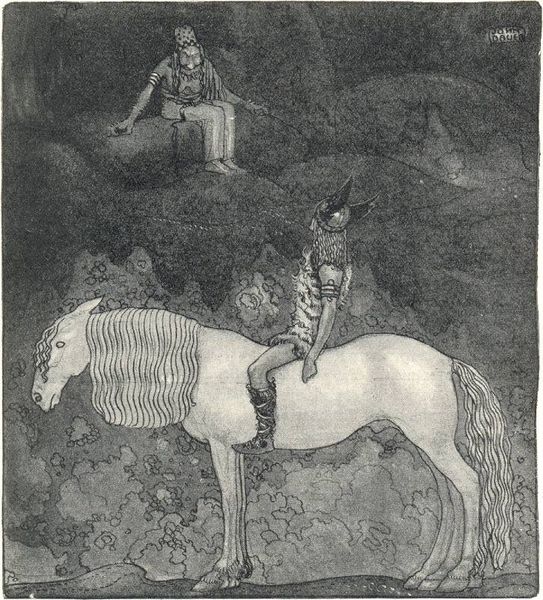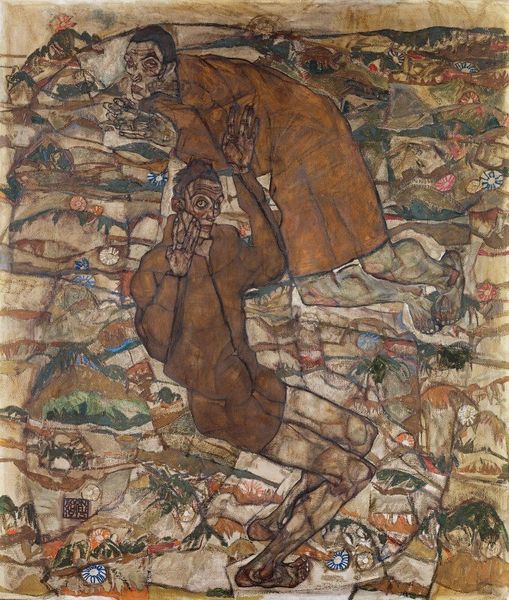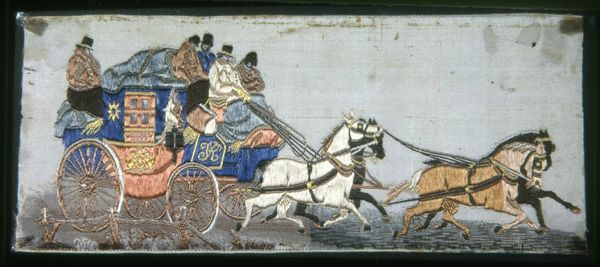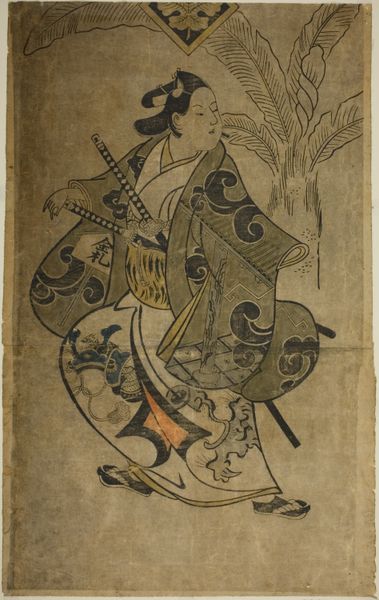
painting, wood
#
portrait
#
water colours
#
painting
#
asian-art
#
figuration
#
handmade artwork painting
#
wood
#
erotic-art
Copyright: Public domain
This Ema, or votive tablet, was painted by Kano Motonobu sometime in the 16th century, likely with mineral pigments on wood. The wood itself is significant. Ema were commonly made from wooden boards, reflecting the material's availability and affordability. Its surface would have been prepared to receive the image, but even so, the grain still shows through the pigments – a reminder of its origin in the natural world. The painting depicts a horse and rider. Horses were considered sacred in Japanese culture, and these votive tablets were often offered to shrines to request blessings or express gratitude. The techniques seen here are part of a long tradition of Japanese painting, yet placed in service of a votive object, blurring the lines between art, craft, and religious practice. This work invites us to consider the interconnectedness of materials, making, and cultural beliefs.
Comments
No comments
Be the first to comment and join the conversation on the ultimate creative platform.
